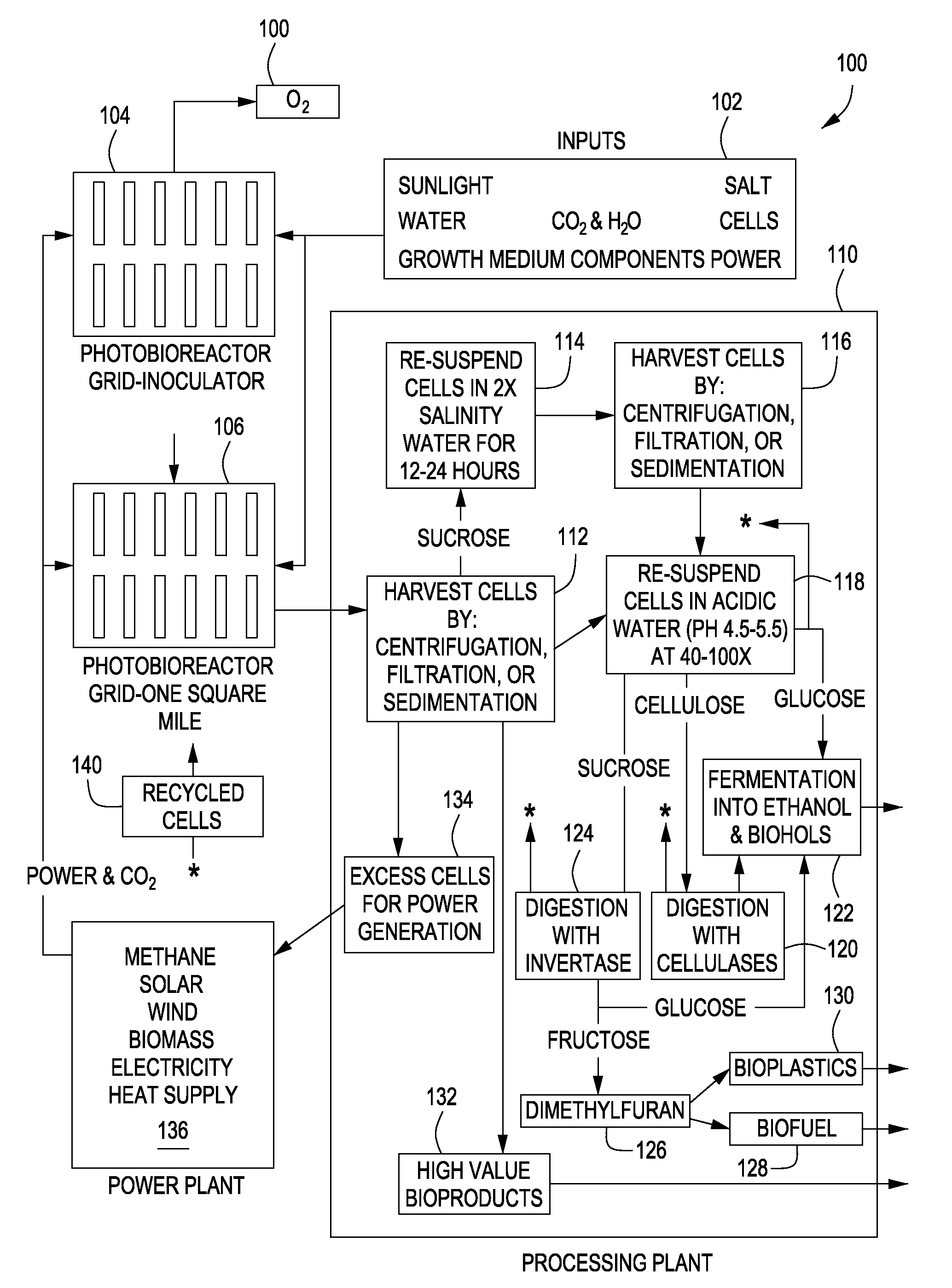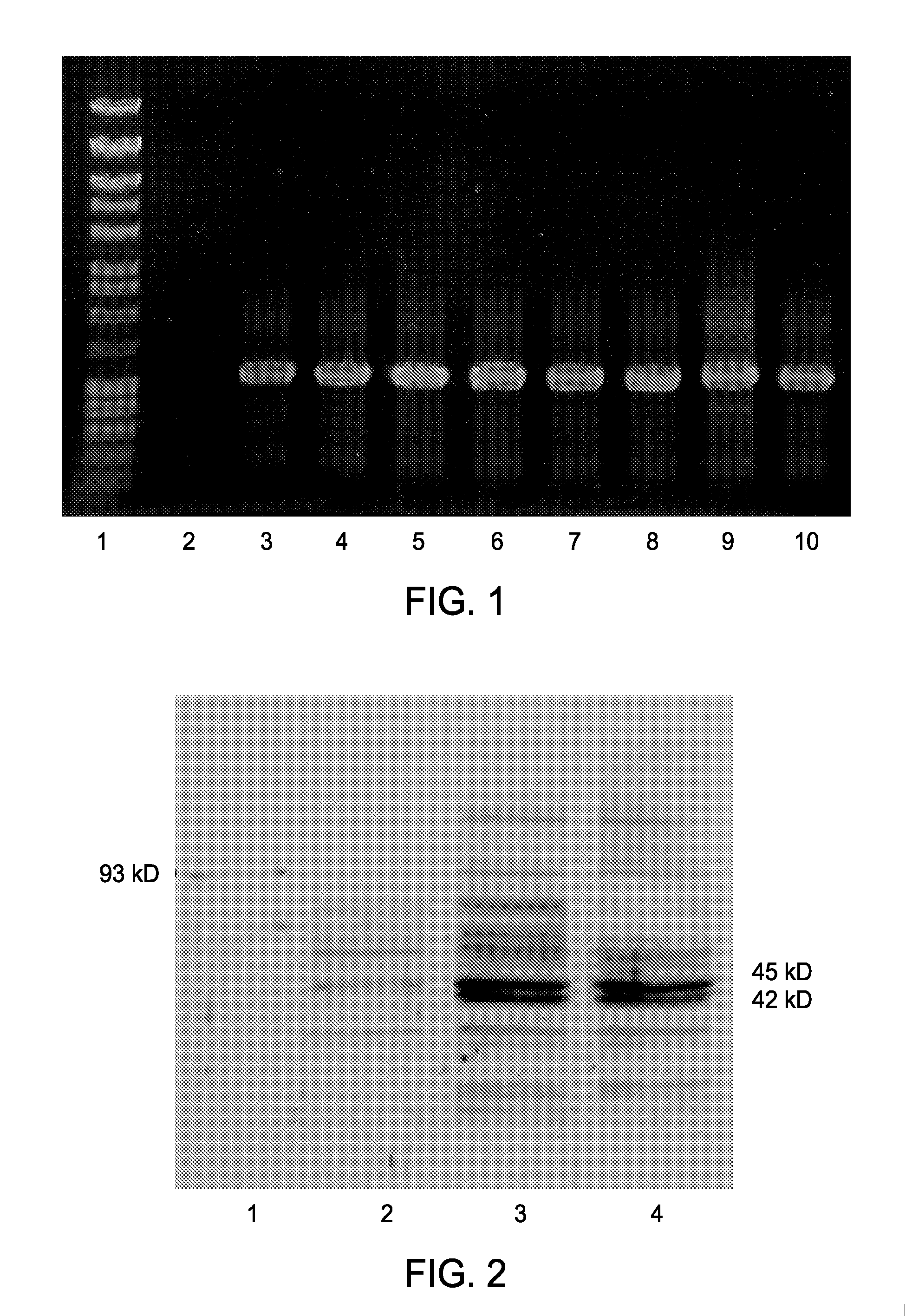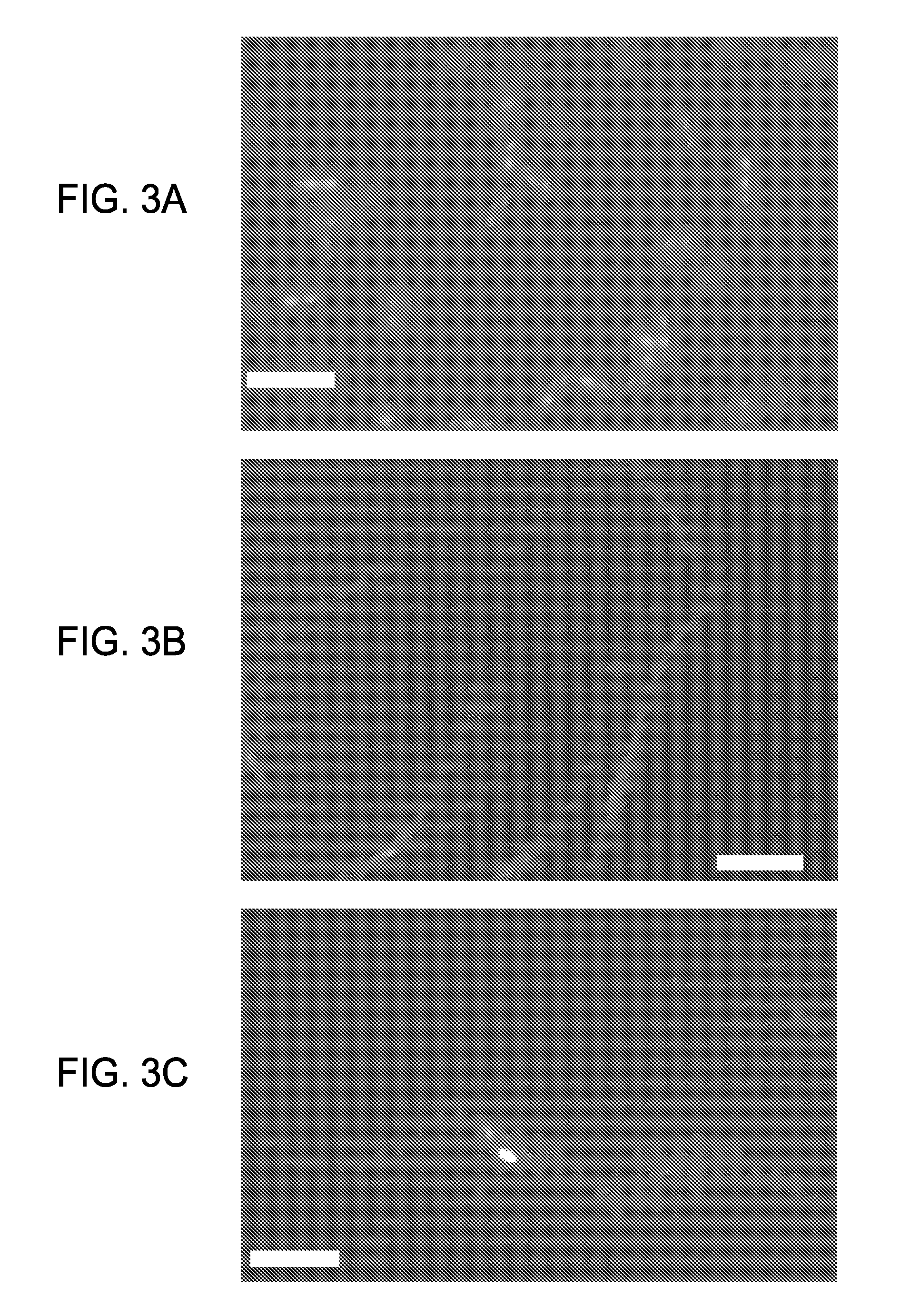Expression of Foreign Cellulose Synthase Genes in Photosynthetic Prokaryotes (Cyanobacteria)
a technology of cyanobacteria and cellulose synthase, which is applied in the field of exogenous gene expression, can solve the problems of dwindling fresh water supply for irrigation, high cost, and high cost, and achieves the effects of low crystallinity, easy degradation to glucose, and large-scale production
- Summary
- Abstract
- Description
- Claims
- Application Information
AI Technical Summary
Benefits of technology
Problems solved by technology
Method used
Image
Examples
example 1
Synechococcus leopoliensis::Plac-acsABΔC
[0062]Exconjugate colonies determined to be free from E. coli contamination were used for screening of genomic integration and expression analysis. Integration of the A. xylinum NQ5 acsABΔC sequence into the neutral site (genomic region discovered in S. elongatus PCC 7942 which can be interrupted without a change in cell phenotype) of the genome of S. leopoliensis is clearly shown by a positive PCR screen (FIG. 1). The acsABΔC fragment is under the transcriptional control of the lac promoter from E. coli which results in low level constitutive expression of AcsAB. The results of a Western blot with the anti-93 kD protein (AcsB) antibody (FIG. 2) demonstrates the presence of a faint 93 kD band in both the AY201 lanes and S. leopoliensis::Plac-acsABΔC lanes with no band of this size present in the UTCC100 wild type lane was observed. However, there are multiple bands present in both wild type and mutant lanes. The S. leopoliensis::Plac-acsABΔC l...
example 2
[0080]Genetically modified strains of Synechococcus (see Table 1 for a description of strains) were maintained at 24° C. with 12 hour light / dark cycles using BG11 (Allen, 1968) as the growth medium. Solid media was prepared with 1.5% agar as previously described (Golden, 1988). 50 ml liquid cultures were maintained on a rotary shaker in 250 ml Erlenmeyer flasks. Growth media was supplemented with 7.5 ug / ml chloramphenicol. Cell concentrations of cultures were determined by measuring their optical density at 750 nm (OD750).
[0081]Celluclast Digestions. Celluclast (Sigma C2730) was diluted 1:1 in 20 mM Sodium Acetate, pH 5.2 and sterilized by passage through a 0.2 um filter (Pall Life Sciences PN 4433). 50 ml cultures of NS::cat and NS::abΔc7S were grown to stationary phase under the conditions described above. The OD750 of each culture was recorded. 40 ml of each culture was centrifuged (10 min, RT, 1,744×g) in and IEC clinical centrifuge. The supernatants were discarded, wet weights ...
PUM
| Property | Measurement | Unit |
|---|---|---|
| temperature | aaaaa | aaaaa |
| temperature | aaaaa | aaaaa |
| temperature | aaaaa | aaaaa |
Abstract
Description
Claims
Application Information
 Login to View More
Login to View More - R&D
- Intellectual Property
- Life Sciences
- Materials
- Tech Scout
- Unparalleled Data Quality
- Higher Quality Content
- 60% Fewer Hallucinations
Browse by: Latest US Patents, China's latest patents, Technical Efficacy Thesaurus, Application Domain, Technology Topic, Popular Technical Reports.
© 2025 PatSnap. All rights reserved.Legal|Privacy policy|Modern Slavery Act Transparency Statement|Sitemap|About US| Contact US: help@patsnap.com



